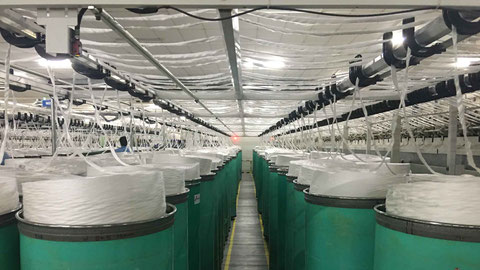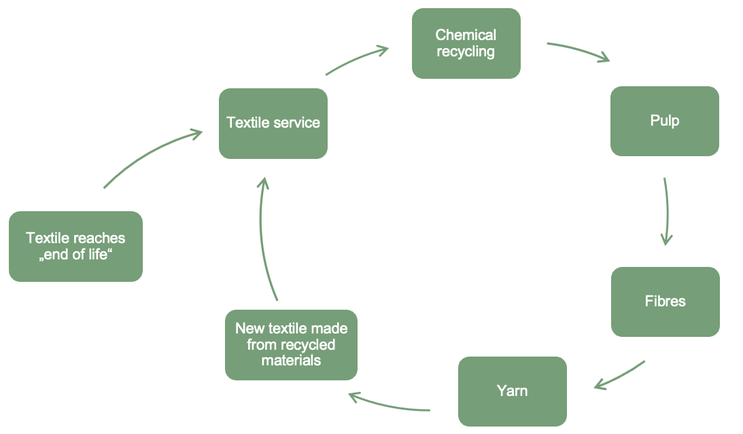TEXTILE RECYCLING AND UPCYCLING
BUSINESS TEXTILES WASTE RECYCLED TO NEW YARNS
WHY IS TEXTILE RECYCLING AND UPCYCLING IMPORTANT?
In the professional textile industry, many resources are needed for the production and use of textiles. Besides the use of large quantities of raw materials, the environment is also damaged due to poor production conditions. Unfortunately, people also often suffer greatly from these poor conditions. In addition, a lot of energy and water is needed during washing and mangling processes. That is why we need to think about how this can be done differently. The use of sustainable materials, good and fair production and working conditions as well as the valuing of resources and textile recycling and textile upcycling of post consumer textiles are becoming more and more important.


SUSTAINABLE AND RECYCLED YARNS
Currently, conventional cotton and polyester have the largest market share for textile fibres. In the business textile industry, these fibres are often used because they can withstand the conditions of industrial laundries and are long-lasting.
With our work we want to reduce the production with conventional cotton and polyester.
For a sustainable development of the business textile industry, we want to switch to production with organic cotton, recycled polyester and regenerated cellulose fibres from our used textiles, which are not only recycled but also long-lasting.
HOW TEXTILE RECYCLING AND TEXTILE UPCYCLING WORK AT CIBUTEX
COLLECTION OF B2B TEXTILE WASTE AND RAW MATERIALS FOR TEXTILE RECYCLING AND UPCYCLING
CIBUTEX is responsible for collecting large quantities of B2B post-consumer textile waste / ressource in the textile recycling and upcycling process. But which textiles can be recycled? We work with selected partners who accept textiles for recycling and upcycling that are made of 100% cotton or blends with a maximum of 50% polyester. For the recycling processes, the colour of the textiles must be white. The recycable B2B textiles are bed linen, table linen and bathroom linen. In the future, CIBUTEX would also like to develop solutions for other textiles, e.g. for the recycling of workwear.
Our vision: "From textile to textile". CIBUTEX wants to enable new textiles through textile recycling of B2B post consumer waste / resource textiles.
TEXTILE TO TEXTILE RECYCLING PROCESS
CIBUTEX uses two recycling processes for B2B post-consumer textiles. One process already enables our vision of "textile to textile“, as we want to enable new textiles through textile recycling of B2B post consumer waste / resource textiles.
White cotton textiles with a maximum of 50% polyester can be chemically recycled. Chemical textile recycling uses a closed-loop solvent that separates the cotton / cellulose from the polyester after it has been shredded into 1 mm small fibres. The cellulose obtained is then mixed with fresh fibres (wood) and pressed into sheets. The sheets are the starting material for lyocell production, from which new fibres are obtained. These fibres can be used in new bed linen, for example.
If the textiles are made of 100% cotton, they can be mechanically torn. The fibres can be used for denim production. In an initial pilot project, jeans could be successfully produced with a recycled content of 20%. With appropriate quantities, a higher recycling share of 30% to 40% could certainly be achieved.
BECOME A STAKEHOLDER
Do you work in the textile service sector and have larger quantities of B2B consumer waste/resource textiles or are you convinced of our initiative and would like to support us and our textile recycling and upcycling project? Are you willing to commit to sustainable business practices within the framework of our cooperative? If you are interested in becoming a stakeholder of our cooperative, please contact us!
Photo credits: Header: Nedlin


